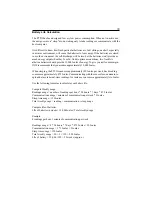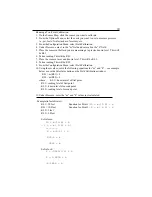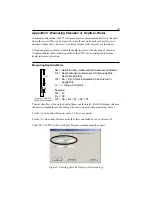
4
How Pressure Sensors Work
The following paragraphs outline the basics of how pressure is measured using
submersible pressure sensors:
Liquids and gasses do not retain a fixed shape. Both have the ability to flow and are
often referred to as fluids. One fundamental law for a fluid is that the fluid exerts an
equal pressure in all directions at a given level. Further, this pressure increases with an
increasing depth of “submergence”. If the density of a fluid remains constant
(noncompressible...a generally good assumption for water at “normal” pressures and
temperatures), this pressure increases linearly with the depth of “submergence”.
We are all “submerged” in the atmosphere. As we increase our elevation, the pressure
exerted on our bodies decreases as there is less of this fluid above us. It should be
noted that atmospheric pressure at a given level does vary with changes in the weather.
One standard atmosphere (pressure at sea level at 20º C) is defined to be 14.7 PSI
(pounds per square inch).
There are several methods to reference a pressure measurement (see Figure 1). Abso-
lute pressure is measured with respect to an ideal vacuum (no pressure). Gauge
pressure is the most common way we express pressure in every day life and is the
pressure exerted over and above atmospheric pressure. With this in mind, gauge
pressure (Pg) can be expressed as the difference between the absolute pressure (Pa) and
atmospheric pressure (Patm):
Pg = Pa - Patm
Figure 1: Pressure Diagram






































